 Once again, America remains firmly rooted to the top of the league of spam-relaying nations, accounting for a hefty 23.2 per cent of the world’s unsolicited email during the second quarter of 2006
Once again, America remains firmly rooted to the top of the league of spam-relaying nations, accounting for a hefty 23.2 per cent of the world’s unsolicited email during the second quarter of 2006
Lurking close behind with a 20 per cent contribution to the global spam total is China (inc. Hong Kong), with South Korea in third with 7.5 per cent.
However, the figures from IT security firm Sophos reveal that both China and South Korea have managed to reduce their spam output since the first quarter of the year, unlike the US which has failed to reduce its spam for the first time in over two years.
Botnets of zombies. Aaaieee!
Sophos explained that the vast majority of the spam tracked by the company was relayed by botnets of ‘zombie’ computers hijacked by Trojan horses, worms and viruses, controlled by devilish hackers.
Graham Cluley, senior technology consultant at Sophos commented that the introduction of the 2004 US Can-Spam legislation in 2004 had resulted in a regular quarter-on-quarter drop in the proportion of US-based spam, Until now, of course.
“Given the number of arrests, and the huge fines dished out to guilty spammers, it is hard to criticise the US for failing to take action, said Cluley.
“Perhaps the reality is that the statistics cannot be reduced any further unless US home users take action to secure their computers and put a halt to the zombie PC problem,” he added.
Eurospam
When it comes to spam-per-continent, Sophos found Asia the busiest around, but noted that spam relaying in Europe continues to grow.
Europe collectively accounted for 25 per cent of the world’s spam in the first quarter of 2006, a figure that has now increased to 27.1 per cent, overtaking North America in the spam spreading league.
Ruski controllers
There may be no sign of Russia in the “dirty dozen” of steeeenkin’ spam-relaying countries, but Sophos reckons there’s still ’nuff bad boys to be found, claiming that Russian spammers may be controlling “vast networks” of zombie PCs.
 Embedded spam
Embedded spam
Spams containing embedded images have seen a huge rise this year, leaping from 18.2 per cent in January to 35.9 per cent in June.
Using images instead of plain text lets spammers bypass some anti-spam filters that weed out spam by analysing the textual spam content.
Pump and dump
Sophos reckons that 15 per cent of all spam emails are now ‘pump-and-dump’ scams, up from just 0.8 per cent in January 2005.
We’ve suffered a ton of these scams which are designed to boost the value of a company’s stock in order for spammers to make a quick profit
“It is worrying to see so many pump-and-dump emails, often with embedded graphics, being spammed out to the general public,” commented Cluley.
“The people that act on these emails are not skilled investors, and do not realise that purchasing the shares is likely to reap no reward, benefiting only the spammers while creating a financial rollercoaster for the organisation in question,” he added.
Although we sympathise with his words, you’d have to be madder than Jock McFruitloop wearing jelly trousers to even consider buying any stocks recommended by these emails.
The Bad Boy tables
Spam relaying countries, April to June 2006:
1. United States 23.2%
2. China (inc. Hong Kong) 20.0%
3. S Korea 7.5%
4. France 5.2%
5. Spain 4.8%
6. Poland 3.6%
7. Brazil 3.1%
8. Italy 3.0% new entry
9. Germany 2.5%
10. United Kingdom 1.8%
11. Taiwan 1.7%
12. Japan 1.6%
Others 22.0%
Spam relaying continents, April to June 2006:
1. Asia 40.2%
2. Europe 27.1%
3. North America 25.7%
4. South America 5.5%
5= Australasia 0.7%
5= Africa 0.7%
Others 0.1%
Sophos
 It’s amazing to watch the price reduction of consumer goods. First we saw the free fall of the VHS machines, then DVD players which got to the ridiculous level of £19.99 – with 10 DVD’s.
It’s amazing to watch the price reduction of consumer goods. First we saw the free fall of the VHS machines, then DVD players which got to the ridiculous level of £19.99 – with 10 DVD’s.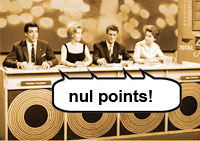 UK banks may be gleefully reporting big fat profits every quarter, but new research from eService provider Transversal claims that online customer service from Britain’s banks has sunk to an all time low.
UK banks may be gleefully reporting big fat profits every quarter, but new research from eService provider Transversal claims that online customer service from Britain’s banks has sunk to an all time low. Of the forty per cent that bothered to provide an email address, there was clearly no rush to answer their customers’ questions, with the banks taking a leisurely average of 22 hours to respond.
Of the forty per cent that bothered to provide an email address, there was clearly no rush to answer their customers’ questions, with the banks taking a leisurely average of 22 hours to respond.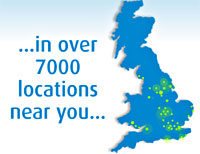 UK regulator Ofcom is looking at plans to introduce high speed Internet access to broadband-starved remote areas by boosting the power of Wi-Fi signals.
UK regulator Ofcom is looking at plans to introduce high speed Internet access to broadband-starved remote areas by boosting the power of Wi-Fi signals.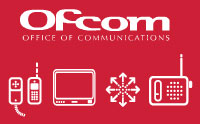 City networks
City networks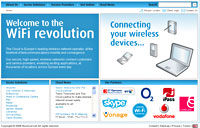 Ruckus, who are currently working with Google to test a free mesh network in Mountain View, California, have developed a new Wi-Fi antenna to help home users connect to city networks.
Ruckus, who are currently working with Google to test a free mesh network in Mountain View, California, have developed a new Wi-Fi antenna to help home users connect to city networks. As of today BT is reshuffling its phone pricing structure. In a typical move of a power-crazed ex-monopoly, it’s giving with one hand and taking away with another.
As of today BT is reshuffling its phone pricing structure. In a typical move of a power-crazed ex-monopoly, it’s giving with one hand and taking away with another. The ‘taking’
The ‘taking’ Well they got there finally, Vodafone UK have announced that they’re releasing the less than catchy named Vodafone Mobile Connect USB Modem in the Autumn. It will support their 3G data service and, surprise, surprise, connect to computers using a USB lead. Rather neatly the software disks aren’t needed, as they’re installed directly from the modem.
Well they got there finally, Vodafone UK have announced that they’re releasing the less than catchy named Vodafone Mobile Connect USB Modem in the Autumn. It will support their 3G data service and, surprise, surprise, connect to computers using a USB lead. Rather neatly the software disks aren’t needed, as they’re installed directly from the modem. BSkyB results for the last year were broadly in line with predictions, but seasoned watchers of all things financial, recognise tell-tale signs of a flattening of the growth curve. The company has managed its spend on programming well, but technology costs remain high, with significant outgoings on expensive High Definition equipment, that won’t bring instant revenue returns.
BSkyB results for the last year were broadly in line with predictions, but seasoned watchers of all things financial, recognise tell-tale signs of a flattening of the growth curve. The company has managed its spend on programming well, but technology costs remain high, with significant outgoings on expensive High Definition equipment, that won’t bring instant revenue returns. James Murdoch the CEO of BSkyB told the corporate world that “Our industry is changing faster than ever before and for Sky, 2006 has been an important and exciting year.”
James Murdoch the CEO of BSkyB told the corporate world that “Our industry is changing faster than ever before and for Sky, 2006 has been an important and exciting year.”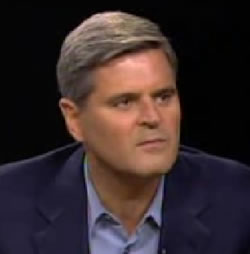 Steve Case, co-founder of AOL, now ex-chairman of AOL-Time Warner, has said he was sorry for the merger between AOL and Time Warner. It is widely regarded as a deal that didn’t go very well, leading to internal wrangling and huge amounts of money being knocked of share values.
Steve Case, co-founder of AOL, now ex-chairman of AOL-Time Warner, has said he was sorry for the merger between AOL and Time Warner. It is widely regarded as a deal that didn’t go very well, leading to internal wrangling and huge amounts of money being knocked of share values. When pushed, Case said from the point of shareholders of the two companies, employees & customers – it didn’t go as he’d hoped, it had been a disappointment and a source for frustration. Given the wide range of those included by Case, we don’t know who else might be disappointed who wasn’t included.
When pushed, Case said from the point of shareholders of the two companies, employees & customers – it didn’t go as he’d hoped, it had been a disappointment and a source for frustration. Given the wide range of those included by Case, we don’t know who else might be disappointed who wasn’t included.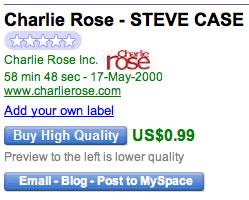 Google Video has been serving videos to the Internet population for over a year and a half now, both
Google Video has been serving videos to the Internet population for over a year and a half now, both 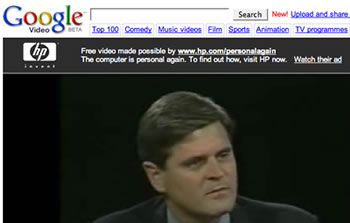 Clicking on Watch their Ad link opens a new browser session and plays the video advert from … Google Video. All very neat.
Clicking on Watch their Ad link opens a new browser session and plays the video advert from … Google Video. All very neat. Once again, America remains firmly rooted to the top of the league of spam-relaying nations, accounting for a hefty 23.2 per cent of the world’s unsolicited email during the second quarter of 2006
Once again, America remains firmly rooted to the top of the league of spam-relaying nations, accounting for a hefty 23.2 per cent of the world’s unsolicited email during the second quarter of 2006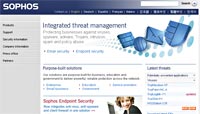 Embedded spam
Embedded spam It’s not just computer programming and call centres that are being outsourced to India, it now appears that advertising and research on advertiser-funded programming is moving there too.
It’s not just computer programming and call centres that are being outsourced to India, it now appears that advertising and research on advertiser-funded programming is moving there too. Lodestar Universal CEO Shashi Sinha told
Lodestar Universal CEO Shashi Sinha told